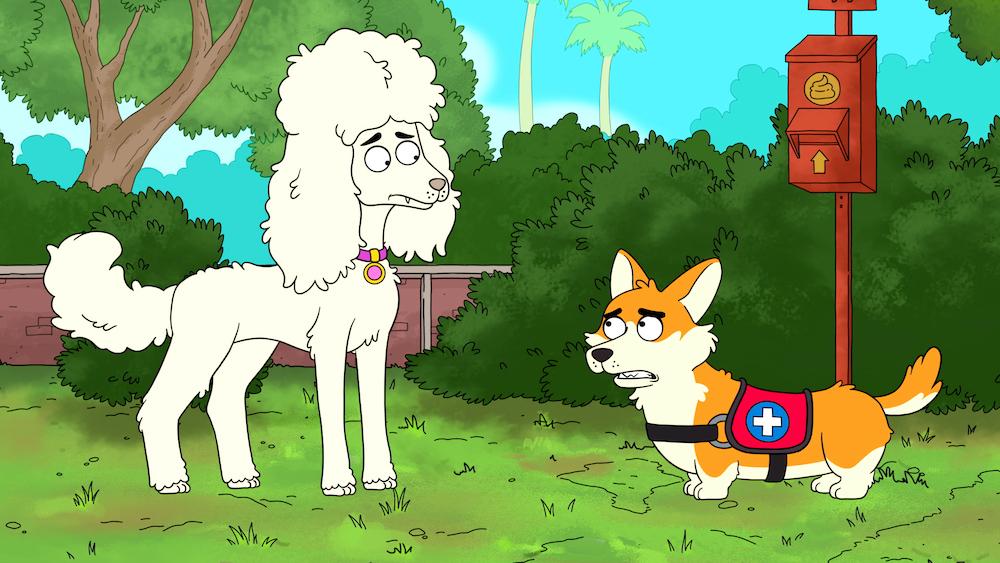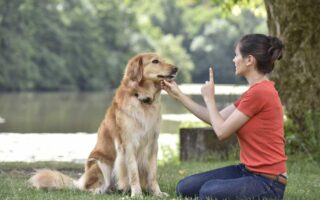Title: The Art of Housebreaking: Nurturing a Well-Trained Canine Companion
Welcoming a dog into your home is an exhilarating adventure, marked by wagging tails, joyful barks, and the promise of unconditional companionship. However, amidst the excitement of bringing a furry friend into your life lies a fundamental responsibility: housebreaking. This essential process not only helps to ensure a harmonious living environment but also fosters a deeper bond between you and your canine counterpart. In this article, we will delve into the nuances of housebreaking a dog, exploring effective strategies, common challenges, and the rewards of nurturing a well-behaved, housebroken pet. Whether you’re a seasoned dog owner or a first-time pet parent, understanding the techniques of housebreaking will set the foundation for a happier home and a more trusting relationship with your loyal companion.
Table of Contents
- Understanding the Basics of Housebreaking a Dog
- Essential Techniques for Effective House Training
- Common Challenges and Solutions in Housebreaking
- Maintaining Long-Term Success in a Housebroken Dog
- Q&A
- Future Outlook
Understanding the Basics of Housebreaking a Dog
Housebreaking your furry friend is an essential process that lays the groundwork for a well-mannered and happy dog. To begin with, it’s crucial to establish a consistent routine that aligns with your pet’s natural instincts. Most dogs need to relieve themselves after waking up, eating, or engaging in play. By following a predictable schedule, you can help them understand when and where it’s appropriate to go. Consider the following tips for an effective housebreaking regimen:
- Frequent Outdoor Breaks: Take your dog out every few hours, especially after meals or naps.
- Choose a Bathroom Spot: Designate a specific area for your dog to relieve itself, which will help them associate that location with bathroom time.
- Use Commands: Implement a specific verbal cue when taking your dog outside to help them learn what you expect of them.
- Reward System: Praise and offer treats immediately after your dog goes in the right spot to reinforce positive behavior.
Patience and understanding are key components during this learning process. Accidents are a normal part of housebreaking. When mishaps occur, it’s important to remain calm and avoid punishing your pet. Instead, redirect them to the appropriate area. Maintaining a clean environment can also deter your dog from repeating the behavior in the same place. A simple table outlining common mistakes and their solutions can be very helpful for new pet owners:
| Mistake | Solution |
|---|---|
| Inconsistent Schedule | Create and adhere to a strict routine. |
| Ignoring Signals | Learn to recognize your dog’s body language indicating they need to go outside. |
| Punishing After the Fact | Redirect and reward instead of punishing. |
Essential Techniques for Effective House Training
To successfully house train your dog, consistency is key. Establish a regular schedule for feeding and bathroom breaks. Take your puppy out first thing in the morning, after meals, and just before bedtime. This helps to create a routine that your dog can learn to anticipate. Additionally, offer positive reinforcement whenever your dog eliminates outside. This can include treats, enthusiastic praise, or extra playtime. Using a command word like “go potty” during bathroom breaks can also reinforce the behavior you want.
Utilizing a designated potty area in your yard can further enhance the training process. Choose a spot that’s easily accessible and encourage your dog to use it consistently. If accidents happen indoors, it’s essential to clean the area thoroughly to remove any lingering scents that might attract your pet back. Implementing crate training can also be beneficial; dogs instinctively avoid soiling their own space. Ensure your dog has enough opportunity to relieve itself before placing them in the crate, and never use the crate as a punishment. Below is a simple guide to understanding your dog’s needs:
| Timing | Activity | Remarks |
|---|---|---|
| Morning | Outdoor Potty | Start the day with a bathroom break. |
| After Meals | Outdoor Potty | Immediately after eating is crucial. |
| Before Sleep | Outdoor Potty | Last chance before nighttime. |
Common Challenges and Solutions in Housebreaking
Housebreaking can often come with its fair share of obstacles that every dog owner might encounter. Among the most prevalent challenges is inconsistency in the training routine. When a family adopts a new puppy or dog, differing schedules and commands can confuse the pet. To combat this, establish a consistent schedule for bathroom breaks and encourage all family members to use the same commands. This uniform approach can align the dog’s understanding and make the process smoother. Additionally, be aware of the dog’s signals; recognizing when they are about to relieve themselves can help you guide them outside promptly.
Another typical issue is the dog’s lingering odors or accidents in the house, which may inadvertently signal to them that it’s acceptable to relieve themselves indoors. Utilizing enzyme cleaners can neutralize the smell instead of masking it. Furthermore, reinforcing successful outings with positive reinforcement—such as treats and verbal praise—can significantly bolster the training process. If setbacks occur, remember that patience is key; every dog learns at their own pace, and maintaining a positive attitude will help you and your furry friend reach that desired milestone of being housebroken.
Maintaining Long-Term Success in a Housebroken Dog
Achieving and maintaining long-term success with a housebroken dog requires consistency and dedication. Routine is key; establishing a regular schedule for potty breaks helps your dog understand when and where it’s appropriate to relieve themselves. Aim to take your furry friend out at the same times each day, such as after meals, after playtime, and first thing in the morning. Reinforce their good behavior by using positive reinforcement, such as treats and praise, every time they go outside. It’s essential to remain patient and avoid punishment for accidents, as this can create anxiety and confusion.
In addition to a consistent routine, environmental management plays a significant role in sustaining your dog’s housebreaking success. Here are some tips to consider:
- Keep a designated potty area outdoors; this helps your dog associate a specific spot with bathroom breaks.
- Limit access to certain areas of your home, especially if you’re unable to supervise your dog consistently.
- When you are unable to closely supervise, consider crating your dog, as most dogs avoid soiling their sleeping area.
Monitoring their behavior will also aid in preventing accidents. Watch for signs like sniffing, circling, or whining, which indicate they need to go outside. By blending routine and environmental management, you’ll foster an environment that supports your dog’s learned behaviors while strengthening the bond between you and your pet.
Q&A
Q&A: Understanding the World of Housebroken Dogs
Q: What does it mean for a dog to be “housebroken”?
A: A housebroken dog is one that has learned to control its bathroom habits and eliminate waste outside or in designated indoor areas, thus keeping your living space clean and odor-free. This process typically involves training the dog to recognize the appropriate time and location for relieving itself.
Q: At what age can I start housebreaking my dog?
A: Most puppies are ready to begin housebreaking as early as 8 weeks old. However, some dogs may take longer to grasp the concept. Patience is key, as each dog’s learning curve varies based on breed, temperament, and previous experiences.
Q: What are some effective methods for housebreaking a dog?
A: Techniques include:
- Positive Reinforcement: Reward your dog with treats, praise, or playtime immediately after they eliminate in the right place.
- Regular Schedule: Take your dog outside frequently, especially after meals, naps, and playtime to establish a routine.
- Crate Training: Use a crate as a safe space for your dog. Dogs naturally avoid soiling their sleeping area, which can help with bladder control.
- Supervision: Keep a close eye on your dog indoors to prevent accidents and to learn their cues for when they need to go outside.
Q: What are the signs that my dog needs to go outside?
A: Look for behaviors like sniffing the ground, circling, whining, barking, or pacing. Sometimes, a sudden change in behavior can also indicate they need to go out.
Q: How long does it take to housebreak a dog?
A: The time it takes can vary widely—some dogs may learn within weeks, while others might take several months. Consistency, patience, and ongoing training will significantly impact this timeline.
Q: What if my previously housebroken dog starts having accidents in the house?
A: If your dog suddenly starts having accidents, it may indicate underlying issues such as stress, medical problems, or changes in the environment. Consult with a veterinarian to rule out health concerns and review your training consistency and living conditions to identify potential stressors.
Q: Are there any breeds that are particularly easier or harder to housebreak?
A: Generally, some breeds are known for being more trainable than others. Breeds like Labrador Retrievers and Golden Retrievers are often more amenable to training. On the other hand, some stubborn breeds, like Bulldogs, may require more time and patience. However, individual personality plays a significant role as well.
Q: Can older dogs be housebroken?
A: Yes, older dogs can absolutely be housebroken, although they may require different techniques than puppies. They might come with established habits that need retraining. Consistent guidance and positive reinforcement can lead to success at any age.
Q: What should I do if my housebroken dog has an accident?
A: Don’t punish your dog, as this can lead to fear and anxiety. Instead, clean the area thoroughly to eliminate odors and avoid the repeat of the behavior. Reassess your schedule and training methods to make adjustments as needed.
Q: What are some common challenges in housebreaking a dog?
A: Common challenges include inconsistent training, lack of a routine, distractions during outdoor bathroom breaks, and regression due to stress or changes in environment. It’s important to stay patient and continue reinforcing positive behavior throughout the process.
Q: Do housebroken dogs still need to be taken outside regularly?
A: Yes! Even housebroken dogs need to be taken outside regularly for bathroom breaks and exercise. Regular outdoor time helps maintain their housebreaking skills and contributes to their physical and mental well-being.
Conclusion:
Housebreaking is an essential part of pet ownership, requiring understanding, patience, and consistent effort. With the right approach, both dogs and owners can enjoy a happy and harmonious living environment.
Future Outlook
having a housebroken dog is not merely a matter of convenience; it is a cornerstone of a harmonious home. This journey of training fosters a deeper bond between pet and owner, built on trust, patience, and understanding. As we’ve explored, the process requires commitment and consistency, but the rewards—peaceful living and a well-adjusted companion—are undoubtedly worth the effort. By taking the right steps and employing positive reinforcement, you can create a nurturing environment where both you and your furry friend thrive. So, as you embark or continue on this training adventure, remember that every successful moment is a testament to the loving partnership you are nurturing. Here’s to happy homes and well-trained tails wagging in delight!



